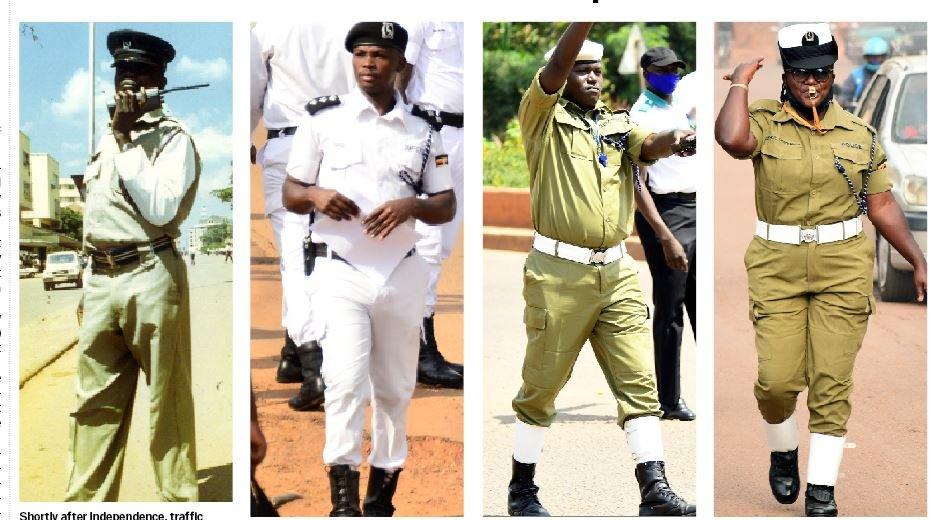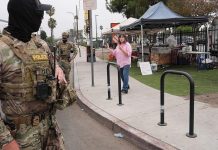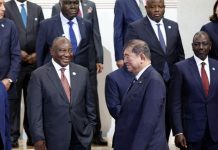Africa-Press – Uganda. Traffic police officers yesterday started wearing their new rebranded Khaki uniforms amid criticism by some motorists that they are not as visible as the abandoned white outfit. Other than the khaki trousers and shirt or blouse, the traffic officers will now have a white elastic belt, whitish beret for males. The female officers will have a bowler hat with black and white colours.
The subordinate traffic officers (below the rank of Assistant Inspector of Police) will wear gaiters on their legs to protect their legs from mud and dust.Assistant Inspector General of Police (retired) Fred Yiga, who was the chairman of the uniform committee that brought those reforms, said he loves the changes.
“However, change of uniform in the (police) forces world over should also usually come with visible changed attitude towards work by the officers. The transition should come with stringent guidelines from top leadership to address prevailing and persistent complaints from the people we police,” Mr Yiga said yesterday. The traffic police officers have been changing uniforms depending on the challenges of the day since the directorate was established in 1926.
The Uganda Police Force records indicate that road indiscipline increased, but arresting errant motorists became difficult as they would just speed off. In 1928, traffic personnel acquired the first vehicles, motorcycles and side cars to enable mobility and also chase after errant motorists who had not paid bicycle and vehicle licences, the police records show.
The next year, a Traffic Ordinance was issued that led to a vehicle census in 1930 that indicated there were 3,619 motor vehicles in Uganda.Passenger Service Vans (PSVs) increased on the road, prompting police to amend the Traffic Ordinance in 1940 to supervise taxi operators, issuance of driving permits and registration of number plates. Before Independence in 1962, traffic police officers wore khaki shorts and shirts like other police officers.Later, police introduced uniforms of white long sleeves on top of the long khaki sleeves for traffic officers.This enabled traffic officers to be easily identified by motorists since they used their hands to direct traffic. The white colour was the most visible to the motorists.
In the 1990s, many traffic officers were accused of soliciting bribes from motorists. The Justice Julia Ssebutinde Commission of Inquiry into Corruption in Police revealed that senior traffic officers forced their juniors to solicit bribes from motorists and would later share with them the loot, which was termed as ‘Sitrep’ (meaning Situation Report).
The commission report recommended the sacking of traffic commanders, but government did not.Traffic jam and indiscipline on the road increased. Traffic officers were often knocked by motorists. On March 22, 2004, police in collaboration with a local company called Damani Group, devised a new method by building control towers at city junctions for officers to direct traffic far from danger.
The then traffic police commander for Kampala Extra (now Kampala Metropolitan Region) Mr Gabriel Tibayungwa, said they were piloting the project and would expand it upcountry if it was successful. It didn’t work and didn’t last six months. In September 2007, Gen Kale Kayihura, the then Inspector General of Police, suggested that traffic police officers be armed with guns to protect themselves against violent motorists. Senior police officers rejected his idea. Gen Kayihura resorted to deploying armed police from the mobile patrol unit to protect traffic officers.
However, he said the deployment led to increase in corruption in the traffic department and thus established Professional Standards Unit (PSU) to investigate corrupt officers. Traffic police officers were the first suspects of corruption to be arrested by PSU in 2008. Despite the arrests, corruption in the department continued, prompting a massive redeployment of personnel to general duties.
New officers were hired to join the then Traffic Department and in November 2012, they rebranded the uniform to white.Two years later, on May 26, 2014, President Museveni described traffic officers as angel-looking beings on the outer side, but the most corrupt people in his government. He said he had received many complaints from people and from his counterparts in the region.Gen Kayihura made massive reshuffle in the traffic directorate to improve performance and stop corruption. A police source said the sustained attack by the President on the traffic officers wearing a white uniform is one of the reasons they scrapped it.
The plan to discard the white uniform and others was mooted in 2019 and was later approved by the police policy advisory committee.Digital equipment were also procured by police to reduce corruption in issuance of Express Penalty tickets for errant motorists.






